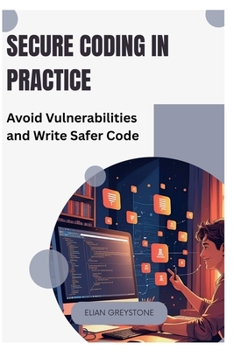Secure Coding in Practice: Avoid Vulnerabilities and Write Safer Code
Security isn't optional-it's your responsibility.
In a world where software powers everything from banking to healthcare, writing insecure code is no longer an oversight-it's a liability.
"Secure Coding in Practice" is a real-world guide to helping developers of all levels build safer, more secure applications by understanding and avoiding common vulnerabilities.
From web applications to backend services, mobile apps to APIs, this book takes a hands-on approach to identifying risk patterns, applying defensive programming techniques, and embedding security into your development workflow.
What you'll learn:
Common software vulnerabilities: SQL injection, XSS, CSRF, insecure deserialization, buffer overflows, and more
How to apply secure coding standards across languages (Java, Python, JavaScript, C/C++, etc.)
Threat modeling, input validation, and data sanitization strategies
Proper handling of authentication, authorization, and session management
Secure API design and secrets management
Tools for static code analysis, dependency scanning, and automated security testing
Best practices for working in modern frameworks (React, Django, Node.js, Spring)
Integrating security into CI/CD pipelines and DevSecOps workflows
Backed by case studies, checklists, and OWASP principles, this book gives you the confidence and practical skillset to write secure code from day one-not just patch it later.
Whether you're a developer, security engineer, or software architect, this is your essential playbook for building trustworthy software.





